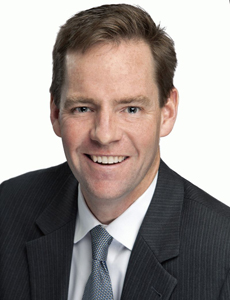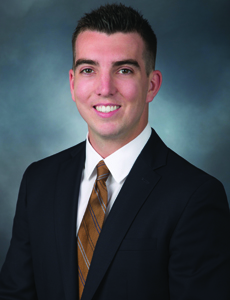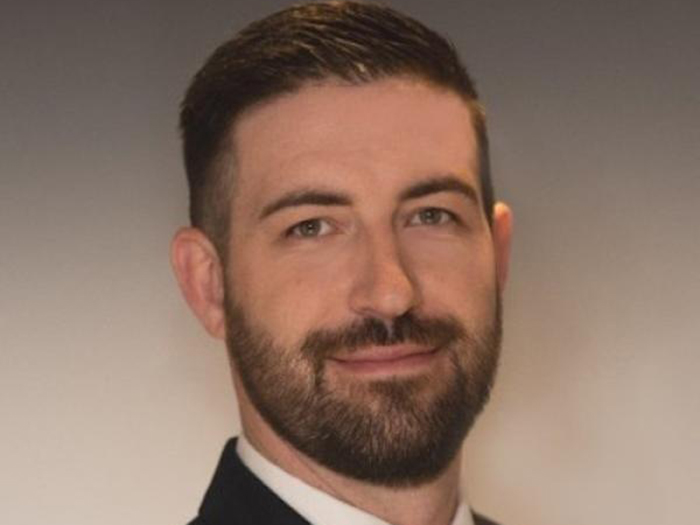Analytics
Cyber Risk Models Remain Elusive

In a perfect world, the ability to model for catastrophic cyber losses would be welcomed with open arms by carriers, brokers and most of all, risk managers.
After all, modeling has been used effectively to identify and quantify patterns and trends that can be used to predict other types of future catastrophic claim outcomes and set pricing standards in coverage areas.
Whether it is estimating wind damage in the Midwest or flooding along the coasts, predictive modeling has given the P&C business an excellent analytics-driven tool.
When it comes to modeling for catastrophic cyber losses in the commercial insurance business, however, experts say that reality won’t be happening any time soon.
“The current state of cyber modeling is like trying to use the count of arrests for a crime to figure out the dollar losses from theft,” said Mark Clancy, chief information security officer for The Depository Trust & Clearing Corp. (DTCC), a New York City-based post-trade market infrastructure for the global financial services industry. “They are related, but not in all the ways you want right now.”
Clancy, who also serves as CEO of Soltra, DTCC’s cyber security information sharing platform, was among the CEOs of leading technology, financial services, utility, health care and cyber security companies, as well as representatives from government and law enforcement agencies, at the White House Summit on Cybersecurity and Consumer Protection at Stanford University in early March. During the event, President Barack Obama unveiled his new executive order on improving information sharing between government and the private sector.
Loren Nickel, regional director and actuary with Aon Global Risk Consulting in San Francisco, said that while there are minor examples of modeling happening for cyber risks, there is not a useful data set with the depth of information the industry would need for a CAT model.
“Cyber risks are a very different risk scenario than a property CAT risk, which is very easy to define and identify, and is basically only a single coverage,” he said. “When you are talking about cyber and data risks, there are many more issues and complexities.”
For example, Nickel explained, you can have two different but similar companies in size and scope and they could have a completely different IT infrastructure, so gauging the exposure is the tough part when trying to create a model that would work for both.
“Cyber risk is the same, there is no history of similar events and so many events are not comparable. Part of the problem is you are trying to model a non-linear system.” — Mark Clancy, chief information security officer for The Depository Trust & Clearing Corp.
John Farley, vice president and cyber risk practice leader at global brokerage HUB International, in Campbell Hall, N.Y., agreed that cyber claims data is very hard to come by, unlike other lines of coverage, because information is not readily shared, making cyber claims difficult to underwrite.
“A large sampling of claims data for cyber claims is not happening right now,” he said. “There no doubt is a reluctance to share because many companies are not willing to advertise that they have been breached and what it has cost them. That’s the first challenge.”
Public-Private Sharing on the Radar
Aon’s Nickel said that even when with dealing with a single client, they are very reticent to share breach data. And even if you get the data, how to define a breach is much more complex than with a destroyed home or office building. In fact, he added, a breach can go undetected for extended periods and may not even cause any damage.
“Verizon has reported that half of breaches go undetected for months, and if someone doesn’t steal or damage anything, is it a breach?” he asked.
New York City-based Robert Rosenzweig, assistant vice president at insurance brokerage DeWitt Stern, said the idea of a public-private partnership sharing information on potential data breach issues makes sense, as it would allow insurers to build a more accurate model for pricing and the coverage being offered under their policies.
Also, with more accurate models it would be fair to assume that the insurers currently offering some modicum of cyber liability coverage would have more balanced portfolios that would be more sustainable in the long run, Rosenzweig said.
“This would create more market stability,” he said, “as insurers would be more likely to offer this product for the long-term if they can underwrite it profitably and it would likely increase the take-up rate on businesses buying cyber liability coverage by making the coverage more accessible.”
Rosenzweig said that while most of the large carriers are trying to use modeling for cyber risks, the question becomes how accurate are their models.
Modeling is limited because data is not being shared.– Robert Rosenzweig, assistant vice president, DeWitt Stern
“This is a product in its infancy,” he said. “Market penetration is not that high and it’s mainly only within the Fortune 1000.” As a result, carriers don’t know the exposure to small and medium U.S. businesses.
Rosenzweig said that some carriers have a better sense of what they are doing in the marketplace, with access to more actuarial data, but without a public-private partnership, modeling is limited because data is not being shared.
“For example, the industry is not privy to losses that might have occurred with businesses that are uninsured.”
Also, the insurers doing the early modeling might enjoy a competitive advantage, so they may be reluctant to share that information.
“They are thinking ‘Why give up our edge?’ ” he said. “The federal government wants this to happen and there are obvious reasons why. The more businesses that are buying this type of coverage, the less impact CAT losses in the middle and small markets would have on the global economy.”
HUB International’s Farley pointed out that cyber risks know no borders, making them much different and complex than data used in the traditional property underwriting process.
“We know earthquakes in Japan will not cause a hurricane in Florida, but cyber claims are much different,” he said. “Something that can start in one corner of the world in a matter of seconds can affect thousands of networks at once. Imagine if what happened to Sony also simultaneously happened to thousands of companies around the world.”
DTCC’s Clancy said the risk domain for cyber is non-linear, meaning that a small or large event can occur and there is no way to tell the difference between the two.
He offered the analogy of taking all the fans at any NFL stadium and lining them up by height. You would get a uniform distribution without huge outliers. If you did the same thing using their net worth and Bill Gates was at the game, that single outlier can impact the outcome.
“Cyber risk is the same, there is no history of similar events and so many events are not comparable,” he said. “Part of the problem is you are trying to model a non-linear system.”
Also, non-cyber perils are fairly static — it’s not like there’s a lot of new weather rapidly being invented. And you typically aren’t faced with situations where there’s a version two of a particular peril and it looks nothing like version one. But that’s exactly what people have to confront in the cyber world, Clancy said.
“People have been trying to steal money from the financial infrastructure for a long time, but today people are attacking because they are mad at someone for stopping payments to WikiLeaks,” he said. “We still don’t know what ‘normal’ looks like.”
Rich DePiero, head of cyber North America for Swiss Re Corporate Solutions in New York City, said many markets have trouble figuring out how cyber risk affects an industry because there are so many causes that can lead to different types of losses.
“The industry is behind the curve on that aspect of cyber,” he said. “For example, if an IT system that everyone uses as a service goes down and leads to a loss, how will it trickle through the industry?”
The most progress Swiss Re sees going on among clients is with the federal government openly encouraging data sharing among peers within specific industry segments.
“Financial institutions and airlines have been doing it, and manufacturers are doing it more,” he said. “With some of the breaches last year in retail space, the information was spread among peers within a week or so. That has to happen more.”
Ryan Gibney, assistant vice president at brokerage firm Lockton Cos. in Washington, D.C., noted that the data breach at health care insurer Anthem represents a very scary cyber risk scenario for the insurance industry because the event was an aggregate loss with multiple insureds.
Cyber Complexity Presents Another Hurdle
In the Anthem case, hackers gained access to the personal information of as many as 80 million Americans, mainly current and former members of Anthem health plans.
“That breach affected every organization whose employees have or had health care through Anthem,” he said. “Thousands of companies would potentially have a legal reporting obligation, but Anthem stepped up and notified all those affected.”
Plus, as more and more data shifts to the cloud, the concept of a large provider platform being breached could mean hundreds of thousands of smaller companies also could be breached.
Those organizations would be unable to transact normal business activities and any such event could shock the insurance industry, Gibney said.
“In one day you could have 500 cyber claims come in the door from a single event,” he said.
For CAT modeling, that’s a serious hurdle, he said. The industry does not enjoy 50-75 years of actuarial data with which to model, and there have not been a lot of widely publicized breaches until the last six months to a year.
“Many carriers are pushing modeling, as are markets like Lloyd’s of London, but there just is not enough actuarial data to do it accurately yet,” he said. “It’s easy to see why storms are so much more predictable than cyber events.”
On the upside, Gibney noted, the growth of cyber insurance is driving increased awareness of cyber security at all sizes and types of organizations. In fact, insurance applications and underwriters are asking for better cyber and data security controls.
Dewitt Stern’s Rosenzweig said the growing number of cyber criminals and data attacks, whether the result of a political group, state-sponsored activity or the usual criminal element, mean that effective modeling, while still distant, is necessary.
“The main reason we have data security regulations in place is that for the most part we really like the benefits and creature comforts we get by giving our data to businesses, so there is no turning back,” he said. “It’s just very early in the process.”













